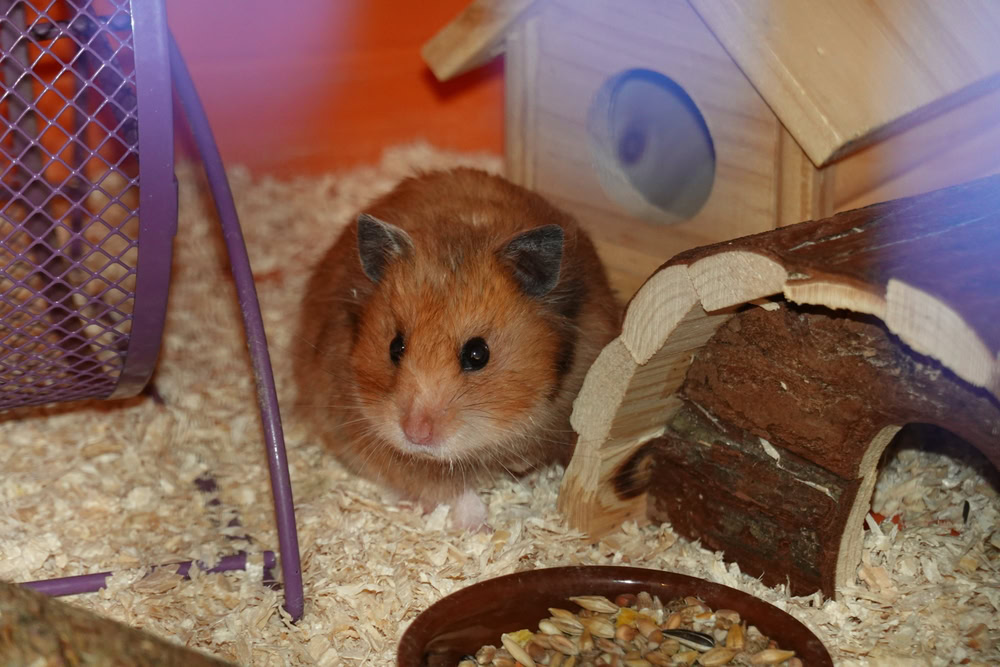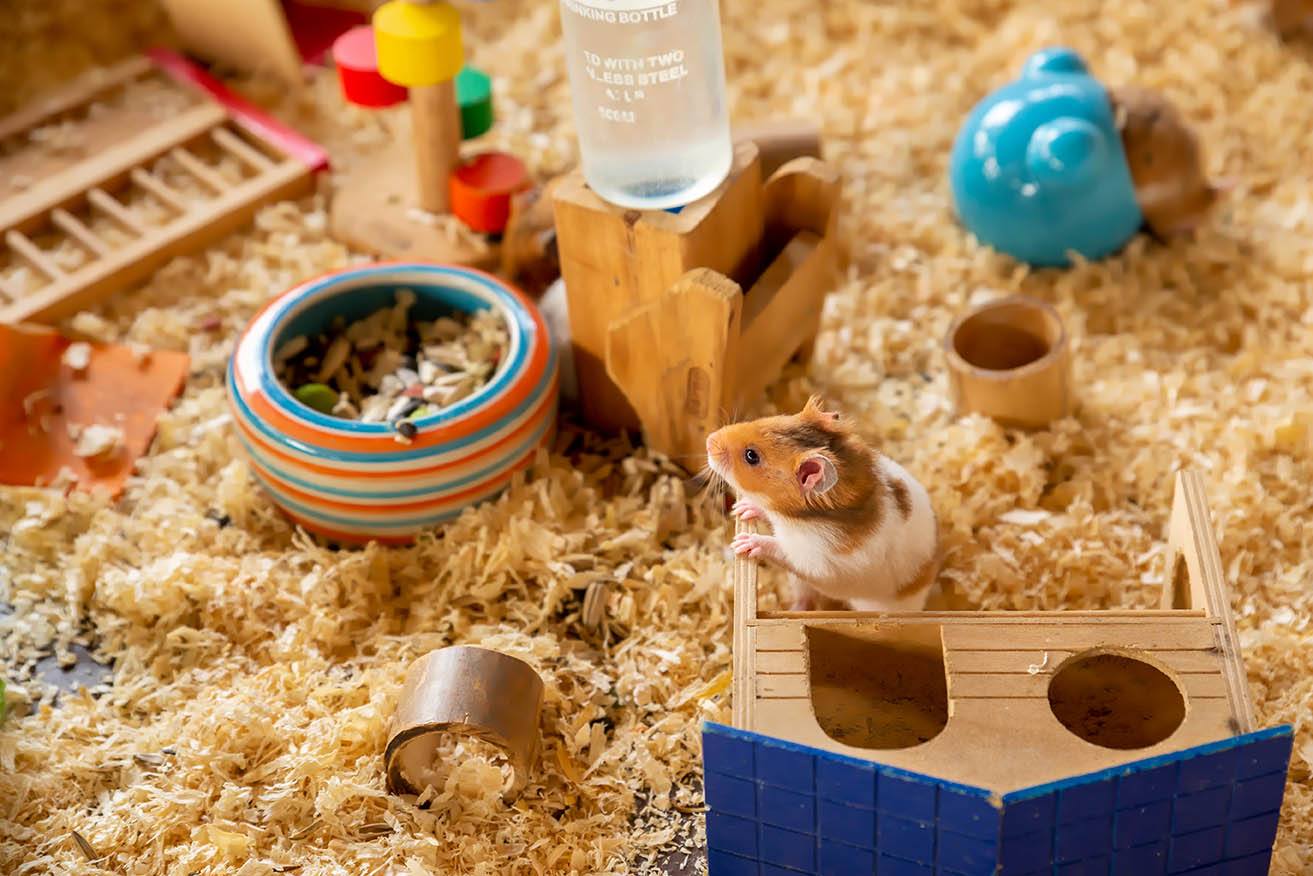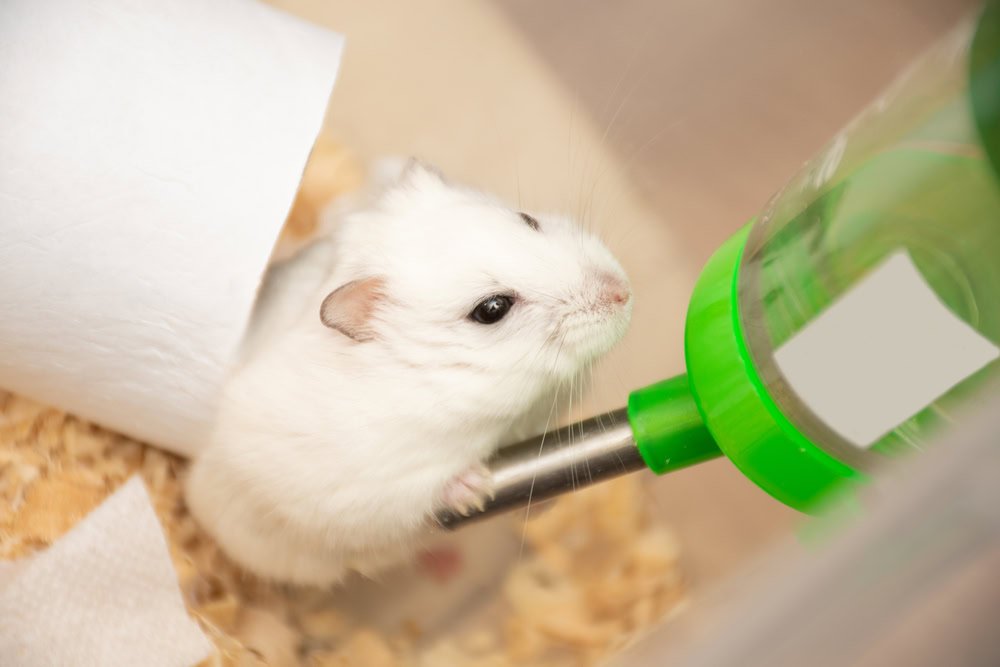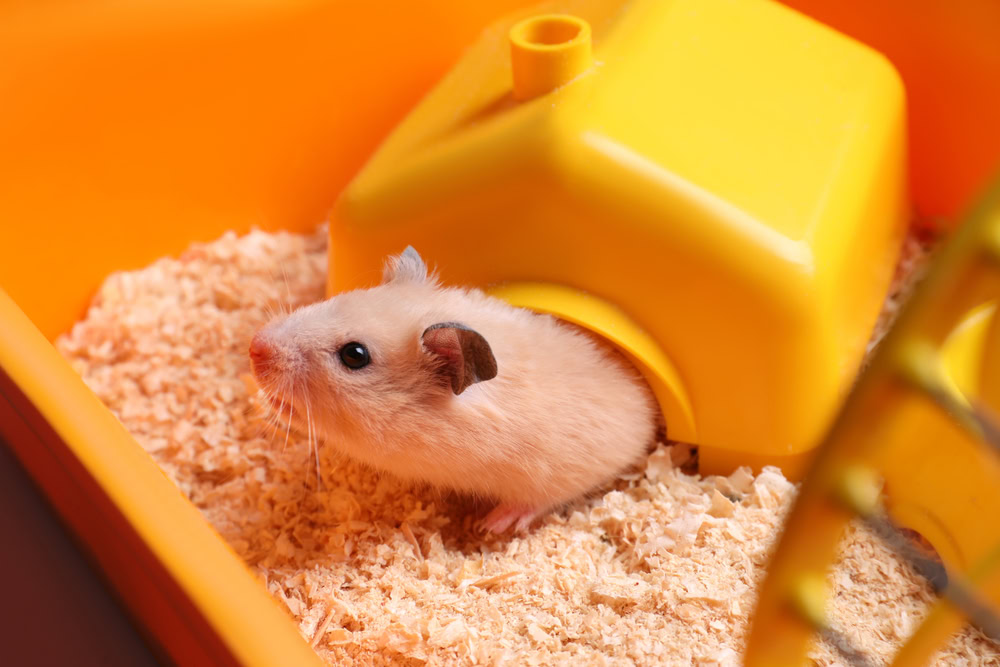Click to Skip Ahead
The Syrian hamster is one of the larger species of all hamsters, and the largest in terms of hamsters that are kept as pets. They are certainly much larger than dwarf hamsters, and as such, they have different requirements in terms of the size of their cage and its amenities (such as a hamster wheel). Accessories that are suitable for a dwarf hamster, for example, will be too small or have compartments and features that are unsuitable for a Syrian hamster.
Bigger is always better in terms of living space, but if you’re limited in budget or space, you can follow the guidelines here when picking out a cage for your Syrian hamster to ensure that they will have enough room to live, eat, sleep, and exercise.

What Do Syrian Hamsters Need?
Raising a Syrian hamster is something of an undertaking. While they live in a cage, if you want a friendly and loving pet, you will need to provide them with plenty of socialization and interaction. You will also need to ensure that they have a good diet, get enough exercise, and have ample room in which to live and run around.

Can Syrian Hamsters Live Together?
Syrian hamsters are solitary animals that prefer to live alone. Although you may see two or more sharing a cage in pet stores, these hamsters are usually young, during which time, even Syrian hamsters can share space without problems.

The 9 Tips for Choosing the Right Cage Size for Your Syrian Hamster
1. Measure the Available Space

Whether you intend to keep the cage on top of the cupboard in a bedroom or the floor in the living room, you need to work out how much space you have. The hamster cage should be secure. It shouldn’t hang over the edge of any surfaces, and it shouldn’t be at risk of getting knocked by doors being opened. A falling or knocked cage can become easily damaged and potentially even smashed. At the very least, a regular knocking on your nocturnal rodent’s living space will prevent them from getting the right amount or quality of sleep.
2. Know the Minimum Cage Size
The recommended minimum cage size for a Syrian hamster is 12” W x 12” D x 24” H. This is considered a minimum, so if you can buy and fit a larger cage in your home, your hamster will appreciate it. Hamsters appreciate cages that allow them to burrow; cages with 15–30” of burrowing space enhances their welfare.
3. Check Your Budget
Other than space, you need an appropriate budget. Cages can vary dramatically in cost, according to their size and the materials that they are made from, whether they are smooth plastic or glass on the sides, and whether they have additional features like built-in wheels or tunnels.
Wire cages, though popular, should be avoided as your hamster can chew through the wire and escape or injure themselves (more on this later). Likewise, wood flooring for your cage should be avoided, as hamsters can chew through wood and escape.
4. Remember That Bigger Is Better
Your Syrian hamster needs space to sleep and somewhere to eat, and they will want plenty of room to run around and exercise. The aforementioned specs are considered the minimum size of cage for this breed of hamster, but bigger is better, and even a few additional inches in one direction can make a big difference to the happiness of your little one.
You can never go wrong with purchasing the largest cage you can afford. A hamster in the wild can travel several miles every night in search of food. Obviously, the logistics of this don’t make sense for a pet hamster (which is why hamsters love running on wheels so much). However, the key takeaway is that there is really no cage that’s “too big” for a hamster.

5. Ensure Ease of Cleaning
Whatever cage or tank you opt for your pet, it should be easy to clean and sanitize, well-ventilated, and easy to light. Hamsters love hoarding food in difficult-to-reach places, and if you can’t easily access or clean all points of the cage, leftover food may eventually spoil and contaminate your pet’s environment.
6. Check the Size of the Fittings
Cages designed for dwarf and other hamsters that are smaller than the Syrian are not suitable. Not only are these likely to be too small, but any fittings, such as tunnels or wheels, will also be too narrow for your hamster to fit in. Despite this, they are likely to try, which means they are also likely to get stuck and need your help pulling the cage apart.
7. Avoid Glass
Check the accessories offered with your hamster’s cage. At times, it might seem like a bargain to purchase a cage with free accessories. However, hamsters can chew through glass, and therefore, glass tubes attached to a drinking bottle are not recommended for hamsters. Instead, they should be given a stainless steel drinking nozzle.

8. Consider a Solid-Sided Cage
Wire cages with horizontal bars offer the opportunity to climb. However, as mentioned earlier, a hamster can chew through wires and escape or injure themselves. A solid-sided cage prevents this, but you will need to ensure that the plastic is chew-proof and doesn’t have any exposed edges that can offer a starting position to chew from.
9. Ensure That There’s a Deep Tray for Bedding
Your hamster will benefit from bedding that’s deep, as it allows them to burrow. Shredded paper (other than newspapers printed with conventional inks) and commercially available paper-based bedding make suitable bedding materials because they are digestible if eaten and do not contain oils, as some wood shavings do, which may irritate your pet’s respiratory tract.
A lot of people offer 2 to 3 inches as a minimum depth, but research indicates that this is a bit short of the ideal depth for a Syrian. In fact, 7 inches should be considered the absolute minimum, and other studies show that 15 inches of bedding enhances the welfare of hamsters. In your home setup, 7 inches should be achievable, but the greater the depth of bedding you can provide, the better, so ensure that your new cage has ample room at the bottom.

Why Does My Syrian Hamster Bite the Cage?
Your Syrian hamster biting the bars of their cage may indicate one of several potential issues.
- They may be bored, chewing the cage for something to do.
- They may not have a chew item and could be compensating for this by chewing the wire on the cage.
- It is considered a sign of stress, as hamsters with deep enough substrate rarely show this behavior.
In any case, chewing the metal bars can cause damage to the teeth and lead to them becoming misaligned or broken. It may also lead to toxicities as your hamster may ingest the paint or other coating materials on the bars, as well as the metal itself. If they cause damage to the bar, this can cut or cause abrasive damage to your hamster’s cheek or mouth too, and with enough time and gnawing, your Syrian hamster could chew through the cage bars and escape.

Final Thoughts
Syrian hamsters are larger than dwarf hamsters and have their own habitat requirements. Chief among these requirements is the need for a larger cage, one that does not have slim tunnels and too-small wheels. You should provide a minimum space of 12” W x 12” D x 24” H, but any additional space that you can provide will be beneficial to your hamster’s well-being and happiness.
Featured Image Credit: New Africa, Shutterstock










